#sustainable harvesting
Explore tagged Tumblr posts
Text
youtube
Economic growth and wildlife conservation often run in conflict, but Mozambican scientist Cesária Huo hopes to support a new fully sustainable and economically viable model for harvesting a potent natural resource: bat guano.
In the stunning landscapes of the Cheringoma Plateau in Mozambique, Cesária embarks on an expedition with her mentor, Professor Piotr Naskrecki, Ph.D., to survey the local population of bats. With the support of a team of passionate young researchers, they plan to meticulously catalog the region’s biodiversity – bats and beyond. They hope to ensure that no species inhabiting Cheringoma’s caves could be negatively impacted by the planned extraction of bat guano by the national company, Guano Moz. Guano is a valuable and potent biological fertilizer, and sustainably harvesting the resource from Cheringoma could be a boost to the local farming economy.
As Guano Moz seeks to create job opportunities through the guano’s extraction and processing, Cesária and her team plan a detailed survey of the cave’s bat colonies: their mating seasons, habits, and population numbers. If they find the right type of bats in the cave system, it signals a higher quality of guano that justifies the cost to harvest. Both Guano Moz and scientists from Gorongosa National Park aim to achieve a delicate balance between economic development and environmental stewardship, demonstrating that sustainable progress is possible when industry and conservation unite for a common cause.
#Nature on pbs#wild hope#solarpunk#Africa#bat#bats#guano#fertilizer#sustainable harvesting#Mozambique#Gorongosa National Park#Cheringoma Plateau#Cesária Huo#Piotr Naskrecki#Guano Moz#Youtube
3 notes
·
View notes
Text

oday, I went to the forest and gathered a lot of small balsam herb, a fantastic remedy for acne and other rashes. For men, it's especially beneficial as it slows down hair loss, and for blond hair, it adds a radiant shine. It's an Asian invasive species, so collecting it is actually good for the Polish forest ecosystem.
#Forest Foraging#Natural Remedies#Small Balsam#Herbal Benefits#Acne Treatment#Hair Loss Remedy#Blond Hair Shine#Invasive Species#Eco Friendly Foraging#Polish Forest#Sustainable Harvesting#Wild Herbs#Natural Skincare#Healthy Hair#Forest Finds
4 notes
·
View notes
Text
Dancing Tiger Mushrooms Buy Dancing Tiger Mushrooms near me

Dancing Tiger Mushrooms. With their vibrant colours and captivating appearance, these mushrooms are not just a feast for the eyes but also a topic of great interest among mycologists and nature lovers alike. In this blog post, we’ll explore what makes Dancing Tiger Mushrooms so special and why they deserve a place in your forest foraging adventures!
What Are Dancing Tiger Mushrooms?
Dancing Tiger Mushrooms, scientifically known as Lactarius tigrinus, are a type of fungi belonging to the Lactariaceae family. Known for their striking orange and black markings that resemble the stripes of a tiger, these mushrooms often grow in clusters, creating a stunning visual display on the forest floor. They typically thrive in temperate regions, particularly in woodland and forest settings, where they form a symbiotic relationship with trees, particularly conifers.
A Feast for the Eyes and the Palate?
While their beauty is undeniable, it’s essential to approach Dancing Tiger Mushrooms with caution. Many species of mushrooms are toxic, and unfortunately, Lactarius tigrinus can fall into that category. They are not widely regarded as edible due to their slightly bitter taste and potential for gastrointestinal distress if consumed. However, some experienced foragers often admire them purely for their aesthetic appeal and ecological role rather than as a food source.
Ecological Importance
Dancing Tiger Mushrooms play a significant role in their ecosystem. Like many mushrooms, they contribute to nutrient cycling in their environments, breaking down organic matter and returning nutrients to the soil. Their presence indicates a healthy forest ecosystem, as they help connect trees and enhance their nutrient uptake through a network of mycelium.
Conclusion
Whether you’re a mushroom aficionado, a curious nature lover, or an aspiring forager, Dancing Tiger Mushrooms are a fascinating subject worthy of admiration. While they may not be the most practical choice for your dinner plate, their striking appearance and ecological benefits make them a treasure of the natural world. Next time you venture into the woods, be sure to keep an eye out for these magnificent fungi. Who knows? You might just witness the magic of the Dancing Tiger in its natural habitat!
Explore, admire, and appreciate what nature has to offer, and remember: always exercise caution and research before engaging in mushroom foraging!
#Dancing Tiger Mushrooms#Mycology#Gourmet fungi#Culinary uses#Edible mushrooms#Flavor profile#Foraging#Wild mushrooms#Nutritional benefits#Medicinal properties#Sustainable harvesting#Food photography#Mushroom identification#Flavor pairings#Cooking techniques#Sautéing#Fermentation#Dried mushrooms#Local markets#Mushroom cultivation#Seasonal recipes#Artisan chefs#Umami flavor#Earthy undertones#Vegetarian dishes#Vegan cuisine#Flavor enhancer#Rare mushrooms#Exotic ingredients#Fungi enthusiasts
0 notes
Link
Dive into the world of WhistlePig Maple Syrup where humor meets sustainability! 🍁 Discover how they're tackling climate change with a smile, collaborating with Super Troopers for a unique twist, and crafting barrel-aged delights that go beyond breakfast. A story of eco-conscious indulgence awaits you! 🌍 #WhistlePigMapleSyrup #SustainableSyrup #MapleMagic
0 notes
Text
some behind the scenes footage from a recent mending commission I did to repair the frayed edge of two fine cashmere sweaters that had me doing some micro knitting on sewing needles
(before and after pictures of the edges under the cut because I'm pretty proud of my work)






#thankfully I had a perfect matching thread so I didn't have to also spend time harvesting the yarn from the seams#this was very tiny but actually pretty easy and almost relaxing lol#vinformation#mending#knitting#sustainable fashion#🎥
80 notes
·
View notes
Text

aint even lying there buddy, my name checks out
#when i saw this option i know this is my time to shine#when you have your little headcannons and lore for your operator before the drifter even a thing#and now i have to do some mental gymnastic to keep them but hey i am actively having fun with it lol#so yeah my operator was a weak tenno that was left behind when their friends go to lua#long story short they are kept alive by transplanting clones and stuff bcos s c i e n c e#and maybe the grineers harvest genetic samples too to boost themself yada yada so basically tldr they have the generot thing#sustains themself with gene repairs and then kuva addiction LMAO#I AM RAMBLINg i enjoy my little silly operator lore ok but idk how to implement it to my drifter BUT ANYWAYS#haha funy#right after this message i gifted him a propane tank with no malicious intent at all absolutely none#warframe#warframe 1999#spoilers#arthur nightingale
56 notes
·
View notes
Text
How I Get the Most Out of Meat When Cooking
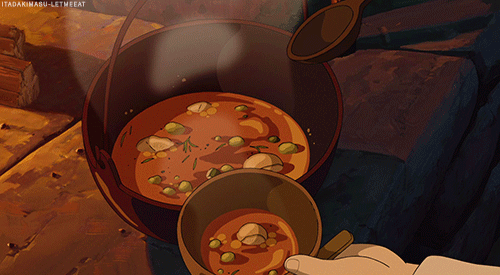
As someone who 1.) was 100% vegetarian for ethical/religious reasons until very recently, and 2.) recently had to reintroduce meat for vitamin deficiency reasons, limiting waste as much as possible when I cook with meat is really important to me. For one thing, I feel like I owe it to the animal that died to get as much use as possible out of its body as a way of honoring its death. For another, meat is expensive (ethically raised meat even more so) and I want to get my money's worth.
I recently bought a bunch of lamb for my family's holiday dinner, so I wanted to share my attempt to practice the Honorable Harvest in my meat consumption. This is new to me, but I wanted to document the attempt because it's been a fun learning process for me! If you want to actually learn about honorable consumption I encourage you to read the works of Robin Wall Kimmerer and other indigenous ecologists, since the Honorable Harvest is based on indigenous North American practices. (Though there are other cultural practices all over the world.)
Step One: Sourcing the Meat
I am very fortunate to have enough disposable income to buy ethically raised meat, which tends to be more expensive. This is a privilege. Other people are not able to spend this extra money on their meat, and that doesn't make me better than them. Feeding yourself is morally neutral, and a tight budget is not a moral failing. Most meat alternative products (Beyond Beef, Impossible, etc.) are also pretty expensive. If the factory-farmed meat at the supermarket is the only thing in your budget, use that.
If you DO have some extra funds, local farms are a great place to source meat. The reason we had lamb for the holidays is because a local farm recently culled their herd and had lamb on sale. In the past we've gotten beef from a relative who raises cattle. I encourage you to learn about farms in your area and what they have to offer. CSAs and farmers' markets are great places to start. You can also ask around at local restaurants about where they source their ingredients.
When I say "ethically raised meat," what I'm really talking about is pasture-raised animals. Cage-free animals may not live in cages, but they can still be kept in cramped, dirty, inhumane conditions and be sold as "cage free." Pasture-raised animals are able to graze and forage and generally wander around within a paddock. For some animals like chickens you can also look for "free range," which means the animals are unfenced and are able to wander freely. Since I don't cook meat often, I try to get free range or pasture-raised meat when I do buy it.
In some areas, you may also be able to find certified ethically slaughtered meat, which means the slaughtering process has been designed to cause as little suffering to the animal as possible. That kind of certification isn't really available where I live, but it might be for you!
And of course, hunting or fishing yourself is also an option. If you kill the animal yourself, you know exactly how it died and can take steps to limit suffering as much as possible. Hunting isn't a skillset I have, but if you do more power to you!
Step Two: Cooking the Meat
This is the easy part. Depending on the cut of meat you got and the dish you are cooking, you may need to remove bones or trim fat, but aside from that it's just following a recipe.
For our holiday lamb stew, I used this recipe. I have Celiac disease, so I subbed gluten-free flour and replaced the beer with red wine. I also added rosemary and garlic for a more Mediterranean flavor to compliment the wine.
Step Three: Organs and Bones
This is where the breakdown is for a lot of Americans. We don't cook with bones or organs very often, and we tend to throw away whatever parts of the animal we don't want. That is not honorable consumption. Part of the Honorable Harvest is using every part of the being that died to feed you.
Most organs make great stew meat. My favorite Nicaraguan beef stew is made with tongue, and my indigenous Hawaiian relatives make stew with pig feet. And while I don't like them, lots of my Southern family members love chitlins (pickled pig intestines). Lots of cultures eat organs, and you'll find plenty of delicious recipes if you look!
Bones are typically used to make stock, which can be used as a base for future soups and stews. There are lots of recipes for DIY stocks and broths, but I usually fry some onions and/or garlic, deglaze with wine, and then add the meat/bones and the water, plus salt, pepper, and herbs for flavor. Most animal bones can produce two batches of stock before they lose flavor. (For really flavorful stock, leave some meat on the bones.)
Once the stock is done, you'll still have bones to deal with. Contrary to popular belief, cooked bones are not safe for dogs to chew on. (But raw bones usually are!) Instead, I strip any remaining meat and gristle from the stock bones, give those scraps to my pups as a treat, and then use the stripped bones for something else. With a little extra processing, the bones can be used as a fertilizer in a garden, a calcium supplement for chickens, or a safe treat for dogs and/or cats.
This was my first time processing bones, but after boiling them for, like, 12 hours in water with salt and vinegar, they were soft enough to break apart with my hands. I'm going to grind them to make bone meal.
#long post#cooking#the honorable harvest#robin wall kimmerer#sustainable cooking#sustainable#sustainability#animism#kitchen witch#kitchen witchcraft#kitchen witchery#green witch#green witchery#solarpunk#cottagecore#food waste#mine#my writing
335 notes
·
View notes
Text

Cherry day! We drove into the wilds of western Pennsylvania to the pick-your-own orchard and brought back twenty pounds.
I got to use the bigger, fancier cherry-pitter that I bought after pitting huge numbers of cherries one. at. a. time! last time we picked them. It is called a (checks notes) Leifheit kirschentkerner. It works, but not well. It pops the pits out of most of the cherries you run through it, but not all. I ended up picking 25 pits out of the batch of pie filling above; they kept helpfully floating to the top. It think the only viable method is to check each cherry as it drops into the dish. Biting into cherry pie and getting one (1) pit is not too bad - but if the wretched thing is full of them that would dampen my enjoyment.
The sour cherries cook up into the most scrumptious pie filling. We may use a mix of sour and sweet to make some pancake syrup tomorrow.
59 notes
·
View notes
Text


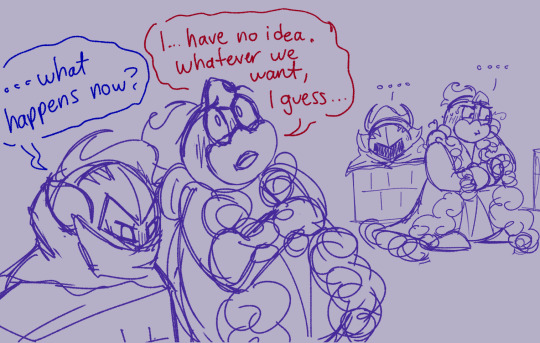






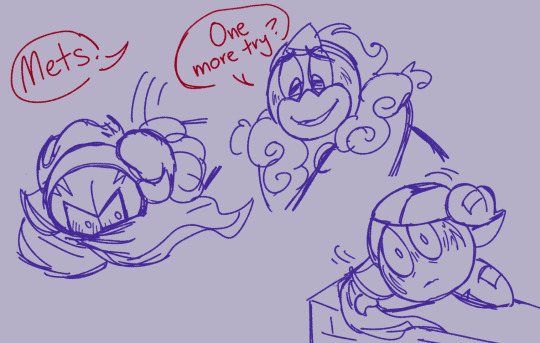






A confession🌟 (Final Part)
(Part 1)
(Part 2)
#here you go my dear friends#the most concentrated sustainably harvested fluff I have probably ever drawn#now then#if you'll excuse me I have to call my dentist after this because I feel like I ate an entire sack of granulated sugar#I probably gave myself like four cavities drawing this#worth it :)#metadede#king dedede#meta knight
686 notes
·
View notes
Text

7/13/24 ~ harvest 🧺
#harvest meal#food harvest#edible gardening#gardening 101#organic garden#indoor garden#sustainable gardening#container gardening#vegetable gardening#starting seeds#growing food#plant life#plant mom#homesteading#jing orange okra#wild boar farms#wild run garden
28 notes
·
View notes
Text


My blueberry bush is looking good. I sprinkled Epsom salt and coffee grounds into the soil as well as bi-weekly organic fertilizer (banana peels and egg shells soaked over night in water, then said water is used for my plants).
She managed to live through a Wyoming Springtime Hailstorm. It was her first, and she made it through with almost all of her leaves.
I can't wait to taste my first berries!
#blueberry#container gardening#urban gardening#gardeners on tumblr#urban farming#green thumb#self sustainability#gardenblr#gardencore#cottagecore#urban cottagecore#future harvest
26 notes
·
View notes
Text
November & December 2024: The Last Of The First & The First Of The Last
Frosted Echinacea:

I forgot to mention in my previous post that the gravy my queen made for the turkey & dressing was amazing. She used a base of homemade chicken broth & store-bought turkey broth and infused it with homegrown lemongrass & lemon thyme. You'd think that would make the gravy lemony but, instead, it just added a nice brightness:

Sunday's sweet potato harvest. This is what two roughly five gallon sized pots can produce so definitely a productive crop if you are growing in a small space like an apartment balcony. As a bonus, the leaves are edible (raw or sauteed like spinach) and, though they aren't prolific bloomers, their blossoms are similar to morning glories. This year's plants had beautiful pale purple flowers with deep purple veining. We planted Beauregard starts but, looking at the coloration of some of the tubers, I think we had some volunteers from previous years:

I drove around the neighborhood collecting bagged leaves on Friday & Saturday.
We are storing some to make leaf mold with. That will take time & moisture. I imagine by Spring time some of the bags will have broken down sufficiently:

The rest was spread around the front & back garden beds as cold weather protection that will eventually break down to amend the soil & build up the soil level. We're basically trying to emulate what trees do in the forest. It is a kind of regenerative agriculture for the home gardener:

This would have been a great shot (well, great to me anyway) if only that white-throated sparrow had cooperated. There was this strand of light just to the left of that shadow that would have made the white & yellow on its head shine but it either had its head turned the wrong way in the light or the right way but in the shadows. This was the best out of the bunch that I took. I still like the lines & colors in the photo:

#garden#backyard garden#flower#frost#green#echinacea#gravy#my queen#broth#lemongrass#lemon thyme#sweet potato#sweet potatoes#harvest#leaves#bagged leaves#one man's trash is another man's treasure#leaf mold#leaf litter#compost#trying to be sustainable#sustainability#regenerative agriculture#home gardener#bird#white throated sparrow#white-throated sparrow#yoshino#weeping cherry#fall colors
7 notes
·
View notes
Text
good god girl, maybe some of us are not vegan because we eat chicken like once in three months?? Would reduction not be a more productive goal of vegan activism than outright banning? Like if your arguments are that animals are being eaten, then you’re being unrealistic about the entire actual concept of the food chain. Humans are omnivores, you do not need to change that to achieve your goals.
A vegan lifestyle is also entirely the product of your geographical location. If you live somewhere that shit does not grow, what are you going to do?? I just think about the difference between food options in India and Canada, for example. India: between the tropics (tropics and equator even, in fact). All-year-round sun, there’s pretty much always stuff growing. Different kinds of land will mean you can grow everything from staples like rice and wheat to vegetables, fruits and plantation crops. It’s reflected in the cuisines: Indian food has a much, much wider offering of vegetarian food, and many more Indians have restricted diets that more or less overlap with vegetarianism. Because crops grows. Locally.
Canada. Harvest in the fall, from November to March, your fields are practically unusable. Compare the prices of fresh produce in (and now I’m being generous to give you a highly populated, non-remote province here for an example) Ontario. Ontario has farms where in the fall you get fresh autumn vegetables and fruits. You’ll also get them in larger quantities. It is way cheaper, fresher and also uses less energy and fuel to transport the vegetables like 50 km from farm to market.
Come the winter and nothing grows. If you look at most vegetables you’ll find on store shelves in December or February, and most of it is either imported from warmer regions of the US (often the case for chains that are in both countries) or from South American countries (sometimes SA -> USA -> Canada). The importing has to go through cross-country customs, had to be driven for days, is less fresh or rich in nutrients by the time you get it, and is more expensive. Of course. And we all come out of it poorer. Is it any wonder why people will eat meat? We’re even talking here about a place like Ontario, very well connected on North American trade routes. Can you justify someone in Yukon deciding to eat meat over a $17/lb. green veg? Be for fucking real…
There simply cannot be a blanket-global solution to animal products. You’ve got to work with what your geography has to offer. It’s the same thing we say when we say that avocados have an environmental cost when you expect them to be available year-round in places they don’t grow. We encourage people to go for more local produce there, and I think the same should go for all parts of your diet too. If your animals are local, then their footprint is lower than importing kiwis from New Zealand to the US. I don’t see how that’s hard to understand.
#veganism#the first para is a rant bc someone was being an idiot but I mean the rest of it most sincerely:#YOU HAVE TO WORK WITH YOUR GEOGRAPHY#capitalism has you thinking the whole world Is this flat homogenous thing#and all things can be solved by ‘buying (new solution)!’ *Buy!* our new Vegan Leather and feel good about yourself!#(<- plastic that will end up in a dump as Indonesia’s problem; not the pontificating American vegan’s)#*~Buy!!~* our new honey substitute! 100% cruelty free by avoiding the bees; even as the bees literally continue to make honey anyway#(<- monocrop agave fields in Mexico can deal with your misplaced guilt for you 🥰💕)#Like. At least have the courage of your convictions and quit sweetener entirely if you’re#concerned about both cruelty (which honey harvesting is not but okay) and sustainability. Or switch back to sugarcane.#Unless of course sustainability is simply someone else’s problem 😊 (hi third world!!)#My problems with veganism the movement are also my problems with the west; you all are really fucking hypocrites.#We have to go cleaning up after you guys all the time. You HAVE to work WITH your geography; not against it#Plants are not some miraculous catch-all solution. And mate; you’ve got to kill a plant to eat it too#Plants are alive; trust me. If you don’t eat anything for fear of killing it you’ll either be living on roadkill and infect and die#or you’ll end up killing yourself out of not! eating!#; you can’t eat rocks. All food was once alive.
14 notes
·
View notes
Text
Good afternoon everyone! Today I decided I was gonna try something new.
🌟🌟 Before proceeding any further, if your unfamilair with a plants edability and want to eat it? RESEARCH IT! 🌟🌟
RESEARCH, RESEARCH,RESEARCH
🌟Do Not Eat Plants You are not confident are edible
🌟 check at least 2 sources ( ag or permaculture extension or a relatively knowledgeable individual, book or online source)
🌟 when researching always check out potential health risks as well as proper cooking/cleaning and point of picking.
🌟always do small tests of eating with allergy protocols.
🌟🌟Thank you for reading the warning before proceeding :) 🌟🌟
Nasturtium leaves!
Now I've eaten the flowers before in salads and as omlette toppings, but I haven't eaten anything else of the plant. So today I decided to give it a go.
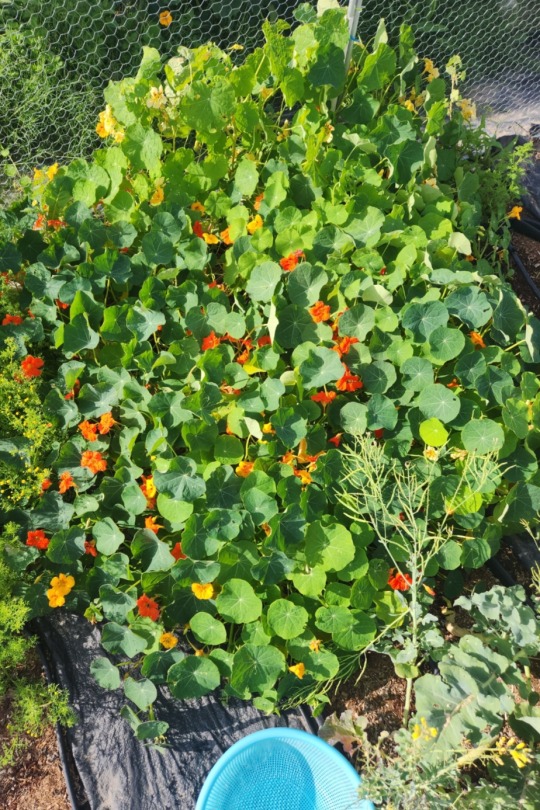
This is todays harvest spot. Most the time when ive trimmed nasturtium before it's been to feed the chickens some extra greens and tonuse less purchased grains. (I'll actually still be harvesting a bit more today for them, I was just on a time budget)

My scale wouldn't weigh this, but after cleaning and separating

Flowers (buds) and seeds separated.
The seeds, according to most of the internet search I've found says they can be pickled like capers. Or dried, ground and used as seasonings. After chicken harvest I'll figure out if I'll be drying or pickling them.
The flowers, I'll likely wash and use to top breakfast omlettes or mix in a salad.
The stems, Ive got about 3/4 of a gallon ziplock bag of them. I want to make a sort of spicy sauce to toss w/them for trying them.
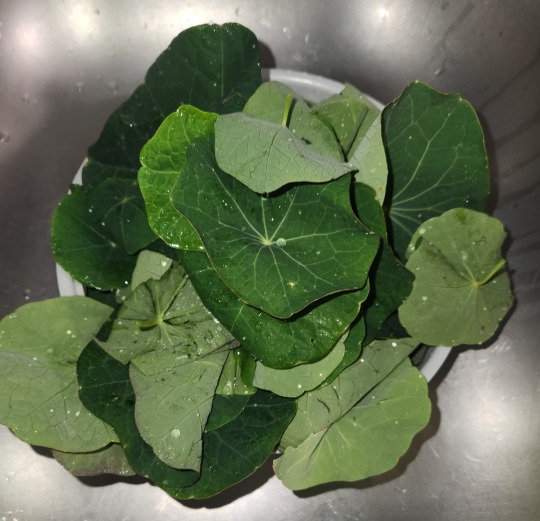
The leaves I took half of them and chopped them (the other half I haven't fully decided its fate)
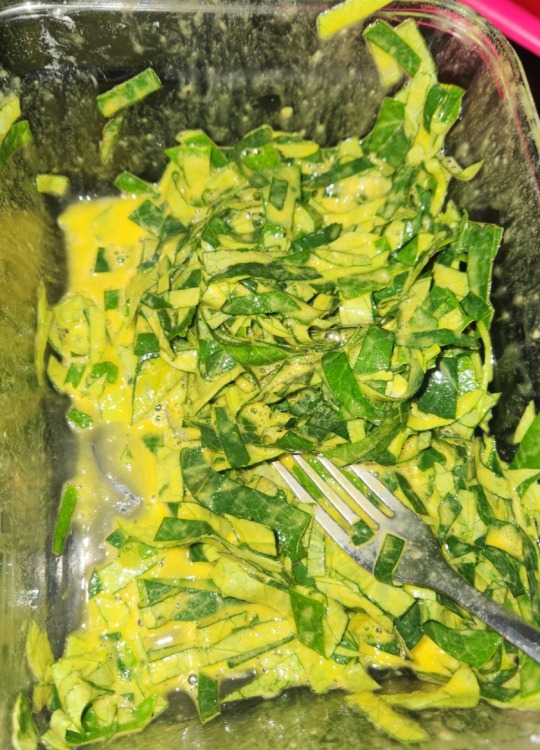
Mixed with some eggs and flour before pan frying in a little butter.

To make this :) simple veggie fritter.
Flavor wise the leaves are pretty bland in this dish. It does remind me a bit of spinich, so I don't have issues eating it again. (Just season it up a bit more.)
The rest of the leaves I may just steam or blanch and mix with a little sea salt to flavor it.
At this time, I think I shall continue adding nasturtium to the garden, but probably for more than just the pretty appeal/ground cover and potential critter meals they provide. I may find another spot for a second patch in rotation though.
That's it for now
🌱🌻Happy Homesteading and Cooking 🌻🌱
3.28.2024
#homesteading#self sufficient living#thestudentfarmer#studentfarmer#self sufficiency#food#garden#gardening#low waste#chickens#edible flowers#healthy eating#urban homesteading#harvest what you eat#right to grow#grow what you eat#grow what you can#eating in season#home cooking#sustainability#urban biodiversity#urban green spaces#urban gardening#urban farming#how to cook nasturtium#nasturtium#nasturtium leaves#nasturtium flowers#nasturtium vine#edible landscaping
13 notes
·
View notes
Text
youtube
Coppicing, a traditional forest management method dating back to the Neolithic period, involves periodically cutting trees to the ground level, taking advantage of their ability to resprout. This technique allows for cyclical harvesting of wood, providing a stable supply of firewood. Despite its decline with the advent of fossil fuels, there has been a recent resurgence in coppicing for its benefits to biodiversity and as a sustainable fuelwood source.
Credits:
Manuscript: Norwegian Institute of Bioeconomy Research, Institute of Botany of the Czech Academy of Sciences, Czech University of Life Sciences Prague, Pamadillo
Animation: Pamadillo - https://www.pamadillo....
Intro/ending music: Gregor Quendel https://www.gregorquen...
Middle music: Andreas Raad / @baltimus9000
Project: ROTATE: Application of traditional knowledge to halt biodiversity loss in woodlands
Funding: Technology Agency of the Czech Republic and Norway Grants 2014–2021
Contact: NIBIO researcher Fride Høistad Schei, [email protected]
References:
1. - (0:41) Cutout: Lumberjack 1 https://pin.it/5m51JGWwV
2. -(1:13) Cutout: Coppiced stool https://www.treehugger...
3. -(1:18) Historic photograph: The sweet track / 7810999323691323
4. - (1:25) Historic photograph: Man coppicing https://villerscottere...
5. - (1:29) Cutout: Cooking and eating https://pin.it/VXXz5zJGe
6. - (1:32) Cutout: Tool https://digitaltmuseum...
7. - (2:21) Historic photograph: Log truck 1924 https://www.trucksales...
8. - (2:23) Photograph: Clear cutting https://www.skogbruk.n...
#Norsk institutt for bioøkonomi#solarpunk#Coppicing#forest management#europe#Neolithic period#trees#forest#harvesting wood#sustainable harvest#firewood#Youtube
5 notes
·
View notes
Text
My professor was demonstrating Adobe's Project Neo and unenthusiastically showed us the AI integration. (He was working in a 3D rendering program AND streaming Discord on a fucking MacBook)
And he lost the ability to use his keyboard.
And I said, "That's what happens when you use AI"
And he said, "yeaahhh... probably"
#i think i love him#HE. WEARS. FUCKING. GARTERS FOR HIM GOT DAMNED SOCKS#im just afraid to try.... and not entirely for fear of rejection.#what if I DO end up in a relationship and like.... I abuse him on accident (trying to get my bipolar managed. it's still MY problem but I do#i do not purposely HURT people when my moods get drastic. You can accidentally abuse someone but you MUST take accountability. you MUST be#aware of your OWN problems and not hide behind bipolar as an excuse... I learned the hard way after much pain)#I am not inherently abusive. I do not like the thought of people hurting. I try to spread love and happiness...#but my bipolar and autism get in my way. and I am working to manage it.#i think he likes me back tho#the body language and the eye contact............ always speaking to me even when there is no reason to like...#idk#ai sucks#YO! i just remembered something fucking COOL! THEY FOUND STEM CELLS IN MENSTRUAL BLOOD!!!#science is trying to learn how to utilize the stem cells that menstrual blood contains#one of the main issues tho is ethics and how this advancement could be used to harm menstruating people#will men lock us all up and harvest our menstrual blood (probably not... They're too immature about it but like) idk#science is cool#it may also lead the push to move to more sustainable ways of managing menstruation!!! WHAT IF WE COULD SELL IT?! (money is fake)#he's reaaaalllly HOT like i am NOT kidding!!
2 notes
·
View notes